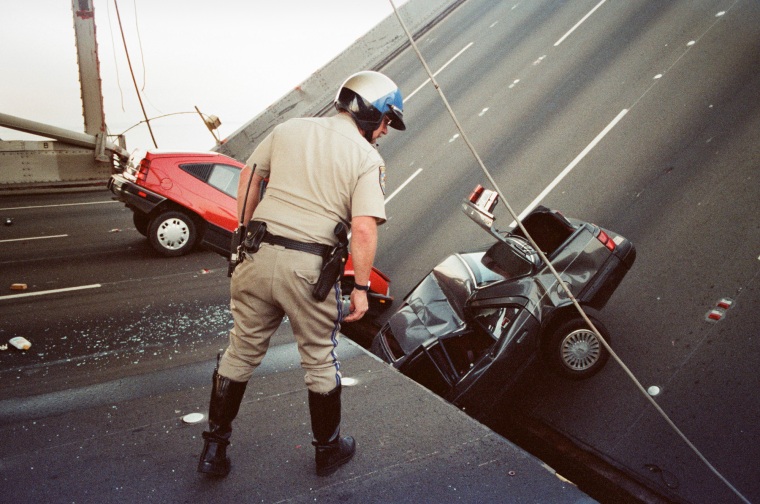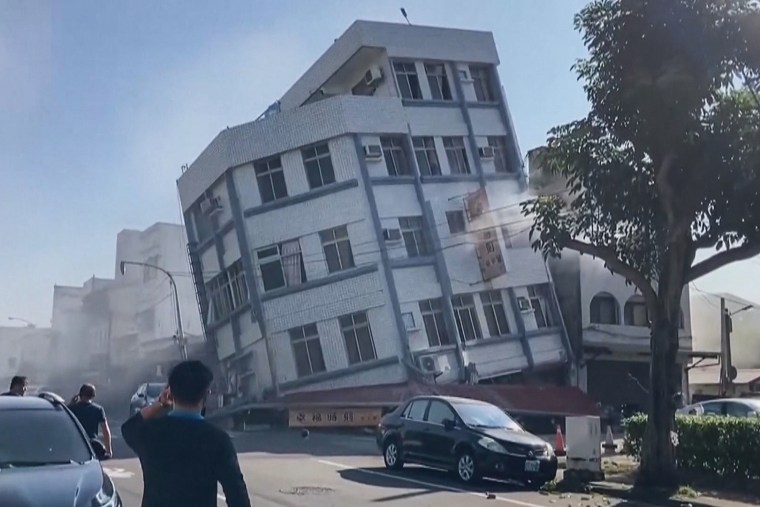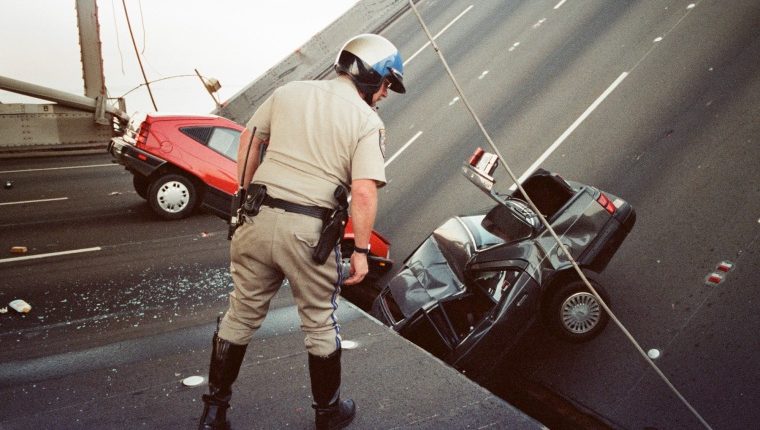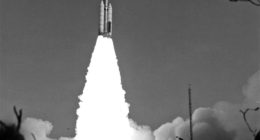The powerful earthquake in Taiwan on Wednesday shook a country that was well prepared for a seismic catastrophe — likely more so than some regions of the U.S., several experts said.
Nine people have been reported dead, though Taiwanese officials said the death toll could rise in the coming days. More than 1,000 were injured and at least 100 were feared trapped. But given the size of the quake — magnitude 7.4 — seismology experts said it appeared the dense country had fared as well as could be expected in initial reports.
That’s no fluke: Taiwan uses a robust early-warning system and has modern seismic building codes, experts said, and its population is accustomed to frequent seismic activity. Following the devastating 1999 Chi-Chi earthquake, the country significantly upgraded much of its infrastructure.
“Two thousand four hundred people died. And this time, we only have nine people reported dead. You see the progress,” said Larry Syu-Heng Lai, a geologist and postdoctoral researcher at the University of Washington who grew up and studied in Taiwan. “Our buildings are stronger. Our facilities are better. You can say we take it seriously — but it’s part of life every day.”
Experts said U.S. cities in earthquake-prone areas along the West Coast are making varying levels of progress to prepare for temblors. But none measure up to Taiwan’s capital.
“Seattle isn’t doing as much to prepare — or Portland — as Los Angeles or San Francisco. And neither are doing as much to prepare as Taipei,” said Harold Tobin, the director of the Pacific Northwest Seismic Network and a professor at the University of Washington.

Officials and researchers in Taiwan are still evaluating the earthquake’s characteristics, impacts and casualties. The lessons they learn could provide U.S. scientists and political leaders a measuring stick for how buildings and communities here might fare.
“These events always give us information to evaluate how well we’re doing here in California,” said John Wallace, a professor of civil and environmental engineering at the University of California, Los Angeles.
In a review of early images and reports from Taiwan after the earthquake, Wallace said it appeared that much of the damage was in older concrete buildings that were five to 10 stories tall and had first floors with open commercial space. Many were on street corners, where buildings can be subjected to twisting forces that heighten damage.
“There’s a weak first story that collapses. It concentrates the damage in that first story,” Wallace said.

He added that older, concrete buildings would be expected to struggle with an earthquake and are the targets for retrofits in Taiwan and the U.S. Meanwhile, Taiwan’s tall buildings — which have a higher level of engineering — appeared to have performed admirably, as expected, Wallace said.
That includes Taipei 101, the country’s tallest tower, which features a 660-metric-ton steel ball suspended with cables in its upper stories — a system designed to dampen movement from heavy winds and earthquakes.
“If what looks like it happened holds up — for the magnitude of this earthquake and its proximity to land, overall they did quite well there. I hate to say that when people were killed,” Tobin said.
Nearly 25 years ago, the magnitude-7.7 Chi-Chi earthquake catalyzed Taiwan toward better preparation.
Syu-Heng Lai was 11 when the quake struck and can still recall how the temblor shook him awake at his family’s apartment in TaiPei and nearly threw him out of bed.
After that, he noticed the country slowly transforming to better mitigate risk. At school, there was a new emphasis and training on earthquake safety. And over the next decade, political leaders instituted new building codes, reclassified seismic zones and designated emergency command centers in rural areas, Syu-Heng Lai said.
Wallace flew to Taiwan a week after the Chi-Chi quake and helped inspect bridges in its aftermath. In the years that followed, he said, the country started by evaluating and retrofitting school buildings and then moved on to the oldest buildings most at risk for collapse.
The initiatives resemble Southern California’s, Wallace said: “We’ve basically been doing kind of the same thing.”
He added, though, that he thinks Taiwan has moved more quickly because frequent, smaller earthquakes kept the issue top of mind.
Other West Coast states lag behind California. Washington only began to systematically evaluate its schools in the past 10 years, and many of Seattle’s old brick buildings are not retrofitted and are likely to collapse in a large earthquake.
Taiwan’s sophisticated early-warning system is also an important part of its safety infrastructure. The system relies on a countrywide network of seismic instruments; when a large quake happens, the system sends messages to people’s phones and automatically cuts into live TV programming to give residents seconds of warning.
Some aspects of it are similar to the systems used in California, Oregon and Washington.
“In the U.S., our ShakeAlert system has the capability to send out an Amber Alert-style messages to all our phones, but it isn’t wired in broadcast media in the same way,” Tobin said.
Video on social media showed TV footage of Taiwanese news programming in which on-screen warnings arrived before shaking began, according to Tobin.
In Taiwan, “there is a more comprehensive warning capability,” he said.
The systems in both countries work by detecting “P-waves” from an earthquake and calculating their strength before sending alerts through internet networks.
“Earthquakes send different waves — ripples on a pond — from the epicenter,” Tobin said. “The ripples that spread the fastest are not the damaging ones, they’re a harbinger, a Paul Revere rider.”
Syu-Heng Lai said Taiwan’s progress on earthquake safety was gradual and required public education, as well as trust in government and faith in scientists.
“We took 25 years to get to this point,” he said.
Source: | This article originally belongs to Nbcnews.com









